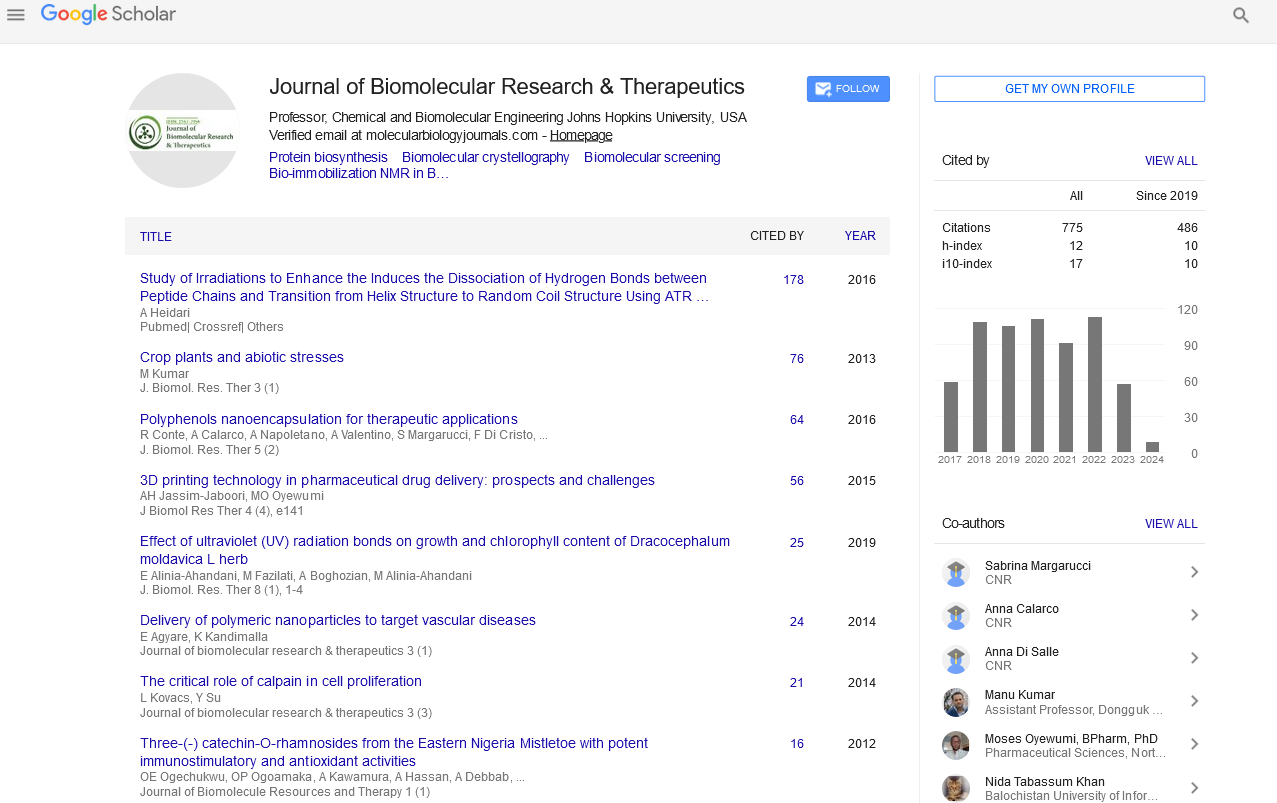PMC/PubMed Indexed Articles
Indexed In
- Open J Gate
- Genamics JournalSeek
- ResearchBible
- Electronic Journals Library
- RefSeek
- Hamdard University
- EBSCO A-Z
- OCLC- WorldCat
- SWB online catalog
- Virtual Library of Biology (vifabio)
- Publons
- Euro Pub
- Google Scholar
Useful Links
Share This Page
Journal Flyer

Open Access Journals
- Agri and Aquaculture
- Biochemistry
- Bioinformatics & Systems Biology
- Business & Management
- Chemistry
- Clinical Sciences
- Engineering
- Food & Nutrition
- General Science
- Genetics & Molecular Biology
- Immunology & Microbiology
- Medical Sciences
- Neuroscience & Psychology
- Nursing & Health Care
- Pharmaceutical Sciences
Abstract
The Planckian Distribution Equation as a Novel Method to Predict the Efficacy of Breast Cancer Pharmacotherapy
Shreshth Rajan*
Patient-specific, personalized medicine is evidently required to administer optimized therapeutics and prevent treatment-related mortality. In order to develop a predictive model for breast cancer therapy, the following study analyzed the mRNA data of 4,704 genes derived from 20 breast cancer patients before and after doxorubicin treatment for 16 weeks. The genomic data of each patient was first stratified into 9 groups based on mRNA expression in response to the tumor and to the doxorubicin treatment. The study then employed the Planckian Distribution Equation (PDE) discovered at Rutgers University to model the stratified samples by transforming each mechanism into a single long-tailed histogram fitted by the PDE. PDE is a novel algorithm used to linearly map long-tailed histograms onto a given category of functions on the Planckian Plane. Our PDE model is based on 3 parameters - A, B, and C - of which 2 were extracted from each model to generate the plots. The drug-induced slopes of the A vs. C plots were then determined for all 9 mechanisms of each patient. The study observed an increase in post-treatment mRNA levels for longer surviving patients in 6 distinct groups of genes. Further analysis displayed how the drug treatment uniquely altered each of the 9 mechanisms based on the length of patient survival. These results indicate that the PDE-based procedures described herein may provide a novel tool for discovering potential anti-breast cancer pharmaceuticals.
Published Date: 2021-03-08; Received Date: 2021-02-11


